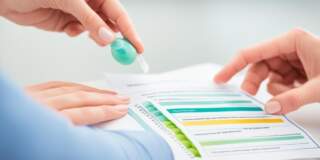Timing is everything when it comes to getting pregnant. Whether you’re just starting your family planning journey or have been trying for a while, understanding your ovulation window and cycle patterns can make a big difference. In this Q&A, Dr. Stan breaks down what to know about ovulation, tracking tools, and how to boost your chances of conception.
👉 Want to learn how to align your timing with your fertility goals? Read the full article here
Ask Dr. Stan
1. What exactly is the “fertile window,” and why is it important?
The fertile window is the span of about six days when you’re most likely to conceive—five days before ovulation and the day of ovulation itself. That’s because sperm can live in your reproductive tract for up to five days, and the egg only survives 12 to 24 hours after release. Knowing this window is key when trying to get pregnant.
2. When do most women ovulate?
For many, ovulation happens around 14 days before their next period. In a 28-day cycle, that’s usually day 14. But not everyone has a 28-day cycle. Some ovulate earlier or later, so tracking your unique pattern helps.
3. How can I track ovulation at home?
You can track ovulation using several methods: ovulation predictor kits (which test for an LH hormone surge), basal body temperature (BBT) charting, or monitoring cervical mucus. Many women find combining two methods provides better accuracy. If you’re unsure where to start, talk to your OB/GYN provider for guidance.
4. Are there symptoms that tell me I’m ovulating?
Yes—common signs include clear, stretchy cervical mucus (like raw egg whites), a slight rise in basal body temperature, mild pelvic discomfort (mittelschmerz), breast tenderness, and even increased libido. Everyone’s signals are a little different, so it helps to tune into your own body.
5. Can age affect how easily I conceive?
Absolutely. Fertility gradually declines with age, especially after 35. That doesn’t mean pregnancy is impossible, but you may need more time or medical support. If you’re under 35 and haven’t conceived after 12 months—or over 35 and it’s been 6 months—talk to a fertility specialist.
6. How often should we have sex if we’re trying to conceive?
Aim for every other day during your fertile window. This ensures there are healthy sperm present when the egg is released. You don’t need to stress about daily intercourse—regular, well-timed intimacy is more effective than frequency alone.
7. What’s basal body temperature tracking, and does it really help?
BBT tracking involves taking your temperature each morning before getting out of bed. A small temperature rise (around 0.5–1°F) can confirm that ovulation has already occurred. While BBT won’t predict ovulation ahead of time, it can help you understand your cycle over a few months.
8. What about cervical mucus—how do I know what’s fertile?
Fertile cervical mucus is usually clear, stretchy, and slippery—almost like raw egg whites. It creates the ideal environment for sperm to travel and survive. Once ovulation has passed, mucus often becomes thicker or sticky again.
9. How long can sperm survive in the body?
Sperm can live inside your reproductive tract for up to 5 days—so even if you ovulate a few days after intercourse, there’s still a chance for pregnancy. This is why understanding your fertile window is so important for timing.
10. When should I talk to a doctor if I’m not getting pregnant?
If you’re under 35 and have been trying for a year—or over 35 and have tried for 6 months—it’s time to check in. There may be underlying issues worth exploring. Don’t hesitate to advocate for your fertility care early—it can make all the difference.










